Cold Plunge Therapy: A Hidden Gem for People with MS?
🧊 Introduction: Why Cold Plunges Are Entering the MS Conversation
Multiple sclerosis (MS) is a complex, unpredictable condition that affects every part of the body—from muscle control and fatigue to cognition and mood. Managing symptoms is often a matter of trial and error. Yet in the midst of medications, supplements, and lifestyle changes, one unlikely tool is generating buzz: cold plunge therapy.
This involves immersing the body in cold water—usually between 10°C and 15°C (50–59°F)—for short durations to stimulate a cascade of physiological responses. Originally popularized by elite athletes and “biohackers,” cold plunges are now being explored by people with chronic illnesses like MS for their potential to:
- Reduce inflammation
- Support the nervous system
- Improve mood and energy
- Offer relief from heat sensitivity and fatigue
So, is cold plunge therapy a hidden gem for people with MS—or just another fleeting wellness trend?
Want a cold plunge? Click here.
❄️ What Is Cold Plunge Therapy?
Cold plunge therapy refers to immersing the body—partially or fully—in cold water for a short period of time. It can take many forms:
- Cold baths or tubs at home
- Commercial cold plunge tanks
- Icy lakes, rivers, or oceans
- Cold water immersion post-shower
Typically, sessions last from 30 seconds to 5 minutes, depending on experience, water temperature, and individual tolerance.
Unlike cryotherapy (which uses extremely cold air for very brief exposures), cold plunge therapy uses direct water contact to activate the skin’s cold receptors, creating a more sustained and penetrative cooling effect.
🌡️ Why Cold Matters in MS
People with MS often experience symptoms that are triggered or worsened by heat, such as:
- Fatigue
- Muscle weakness
- Blurry vision
- Brain fog
- Spasticity
This is partly due to Uhthoff’s phenomenon, where increased core temperature impairs nerve signal transmission in demyelinated neurons. Cooling the body, even slightly, can reverse these effects temporarily.
But the benefits may go far beyond temperature regulation.
🧠 How Cold Plunges May Help People with MS

1. Supports Nervous System Regulation
Cold plunges stimulate the autonomic nervous system, particularly the vagus nerve, which helps shift the body from a “fight or flight” state into a “rest and repair” state. This can help:
- Calm an overactive stress response
- Reduce feelings of anxiety or panic
- Improve sleep and emotional resilience
For people with MS, who often experience dysautonomia, anxiety, and nervous system sensitivity, this shift is crucial for recovery and stability.
2. Anti-Inflammatory Effects
Emerging research suggests that regular cold exposure may reduce systemic inflammation, lowering levels of inflammatory cytokines such as:
- TNF-α (Tumor Necrosis Factor-alpha)
- IL-6 (Interleukin-6)
- CRP (C-reactive protein)
Chronic inflammation is central to MS progression. While cold plunges won’t replace disease-modifying therapies, they may help modulate the immune response in a complementary way.
3. Improves Circulation and Muscle Recovery
Cold water immersion causes vasoconstriction (narrowing of blood vessels), followed by vasodilation (widening) when you exit the water. This can:
- Flush metabolic waste from muscles
- Improve blood flow to areas of stiffness or spasticity
- Help reduce soreness after physical therapy or stretching
Many people with MS report relief from muscle tightness, cramps, and restless legs after cold plunges.
4. Boosts Mood and Mental Clarity

Cold water immersion triggers a surge of norepinephrine and dopamine, the brain’s feel-good chemicals. This can:
- Boost mood
- Increase alertness
- Counteract MS-related brain fog or depressive symptoms
In fact, some studies have found that cold exposure may act as a natural antidepressant—especially when practiced consistently.
5. Helps Manage Fatigue
One of the most debilitating symptoms of MS is fatigue. Cold plunges can offer an energizing reset without the crash associated with stimulants or caffeine. Short plunges in the morning or mid-afternoon may:
- Revive your nervous system
- Enhance mental stamina
- Help break out of a fatigue spiral
⚠️ Who Should Be Cautious?
Cold plunge therapy is generally safe for many people with MS when done correctly. However, it’s not recommended for everyone.
Avoid cold plunges (or consult your doctor first) if you have:
- Cardiovascular issues (arrhythmias, heart disease)
- Severe autonomic dysfunction (orthostatic intolerance, etc.)
- Raynaud’s disease or poor circulation
- Hypothyroidism or cold intolerance
- Advanced MS with poor body temperature regulation
Never do a cold plunge alone if you have mobility issues or risk of falling. Always have someone nearby during your session until you are confident it’s safe for you.
🛠️ How to Start Cold Plunge Therapy at Home
✅ Step 1: Start Small
Begin with cold showers, adding 15–30 seconds of cold water at the end of your regular shower. Work up to 2–3 minutes.
✅ Step 2: Create a DIY Cold Plunge
You don’t need a fancy ice tub. Try:
- A bathtub with cold tap water + 2–3 trays of ice
- An outdoor water barrel or trough
- A portable cold plunge tub (available online)
Water temperature should ideally be 10–15°C (50–59°F). Use a thermometer to stay in a safe range.
✅ Step 3: Time It Right
Ideal times to plunge:
- Morning: Boost alertness and energy
- After movement or PT: Reduce inflammation, aid recovery
- Post-flare: Calm the system and refresh mental clarity
- Before bed (brief dips only): Help lower core temperature for sleep
✅ Step 4: Breathe Through It
The first 30 seconds may trigger a “cold shock” response—fast breathing, elevated heart rate. Use breathwork to stay calm:
- Inhale deeply through the nose for 4 seconds
- Exhale slowly through the mouth for 6–8 seconds
- Repeat to engage the vagus nerve and relax
✅ Step 5: Warm Up Gently
Don’t jump into hot water right after. Instead:
- Put on cozy clothes and warm socks
- Sip warm herbal tea
- Do light movement (walking or stretching)
This signals to your body that you’re safe and helps it integrate the plunge's effects.
🧘 Enhancing the Benefits: Pairing Cold Plunges with Recovery Practices
Combine cold plunges with other MS-friendly recovery techniques to boost results:
| Practice | Benefit |
|---|---|
| Breathwork | Enhances parasympathetic activation |
| Stretching/Yoga | Aids circulation and reduces spasticity |
| Meditation | Reinforces mental calm post-plunge |
| Anti-inflammatory nutrition | Supports immune balance |
| Adaptogenic supplements | May reduce fatigue and stress response |
You can build a daily or weekly ritual that supports your MS management plan in a holistic way.
🧠 Real-Life Stories: MS and Cold Plunge Experiences
“Cold plunges were scary at first, but now they’re part of my recovery toolkit. I do 2 minutes after a long day, and it helps with my spasticity and resets my mood.”
— Carmen, 38, living with MS for 7 years
“My fatigue was ruining my mornings. A short cold shower wakes me up without needing caffeine. I feel more alert and productive.”
— Jay, 29, newly diagnosed
“I combine my plunge with breathwork. The combination feels like I’m rebooting my nervous system—especially after a flare.”
— Marie, 46, secondary progressive MS
🔄 Weekly Cold Plunge Routine for MS (Sample)
| Day | Activity | Duration |
|---|---|---|
| Mon | Cold shower (post-stretching) | 1–2 mins |
| Tue | Full plunge after gentle yoga | 2–3 mins |
| Wed | Rest day | - |
| Thu | Facial cold dip for mood boost | 30 secs |
| Fri | Cold plunge with breathwork | 3 mins |
| Sat | Outdoor cold exposure (weather permitting) | 2 mins |
| Sun | Optional light cold shower | 1 min |
Consistency is key. The more regularly you expose your body to brief cold stress, the more resilient your system may become.
🧊 Final Thoughts: Is It Really a “Hidden Gem”?
Cold plunge therapy isn’t a magic bullet. But for many people with MS, it offers something rare: a low-cost, accessible, natural way to influence how they feel.
When used safely and consistently, cold exposure may help with:
- Symptom relief
- Mental clarity
- Mood regulation
- Autonomic balance
- Recovery after flares or activity
It’s not a replacement for medications or professional care—but it can become part of your self-care arsenal.
If you’re curious, start with baby steps. Track your responses. And as always, check in with your healthcare provider—especially if you’re on medication or have co-existing conditions.
Sometimes, healing doesn’t come from doing more—but from shifting how you relate to your body. Cold plunges invite you to meet discomfort with breath, awareness, and calm—one plunge at a time.
Want a cold plunge? Click here.
📚 References
Davis, S. L., et al. (2010). Thermoregulation in multiple sclerosis. Journal of Applied Physiology, 109(5), 1531–1537.
Kox, M., et al. (2014). Voluntary activation of the sympathetic nervous system and attenuation of the innate immune response in humans. PNAS, 111(20), 7379–7384.
Yamane, M., et al. (2006). Influence of prior hyperthermia on exercise-induced heat shock protein 72 response in human skeletal muscle. American Journal of Physiology, 290(6).
Huttunen, P., et al. (2004). Health effects of cold exposure: a scoping review. International Journal of Circumpolar Health, 63(2), 243–245.
Kregel, K. C. (2002). Invited review: Heat shock proteins: modifying factors in physiological stress responses and acquired thermotolerance. Journal of Applied Physiology, 92(5), 2177–2186.
van der Meijden, W. P., et al. (2022). Cold exposure and neuromodulation: Exploring the vagus nerve’s role in inflammation and mental health. Frontiers in Neuroscience, 16, 889330.
Related Posts
-

Learning to Feel Safe in Your Body Again
If your body no longer feels like a safe place—due to trauma, chronic illness, or anxiety—you’re not alone. This guide offers gentle, body-based strategies to help you reconnect with yourself, regulate your nervous system, and rebuild trust in your physical experience.
-

When You Feel Emotionally Unlovable: Challenging the Lie
Feeling unlovable because of your emotions, illness, or sensitivity? You’re not broken—you’re healing. Learn how to challenge the lie of emotional unworthiness and rebuild self-trust, one compassionate step at a time.
-
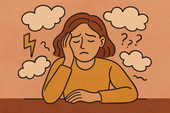
Brain Fog and Fatigue: How to Stop Blaming Yourself
Struggling with brain fog or chronic fatigue? You’re not lazy or failing. Learn how to stop blaming yourself for symptoms caused by MS or chronic illness, and start embracing a more compassionate path to healing and self-understanding.
-

Creating an Emotional Support Team You Actually Trust
Tired of feeling unsupported or misunderstood? Learn how to build an emotional support team you actually trust—with people who see you, hold space for you, and respect your boundaries, especially when living with MS or chronic illness.
-

MS, Vulnerability, and the Fear of Being Seen
Living with MS can make vulnerability feel unsafe. Learn why so many people with MS hide their struggles—and how to gently move toward authenticity, self-acceptance, and deeper connection without shame.
-
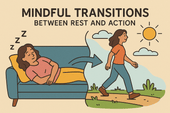
Mindful Transitions Between Rest and Action
Struggling to shift between rest and activity without guilt or overwhelm? This guide offers gentle, mindful strategies to make transitions feel more natural, intentional, and supportive of your nervous system.
-

The Pain of Being Misunderstood—And How to Cope
Feeling the sting of being misunderstood? Learn why it hurts so deeply and discover practical, healing strategies to protect your truth, communicate clearly, and rebuild emotional safety when others just don’t get it.
-

Letting Go of Productivity Guilt When You Need to Rest
Struggling with guilt every time you try to rest? Learn how to release productivity shame, understand why rest matters, and embrace a more compassionate rhythm for healing and recovery—without feeling lazy.
-

Rebuilding Energy Reserves Without Shame
-

What to Do If You Feel Emotionally Invalidated by Doctors
Feeling emotionally invalidated by your doctor can be deeply distressing. Learn how to recognize medical gaslighting, validate your own experience, and advocate for better care when you’re not being heard.
-

How to Rest Without Feeling Lazy
Rest isn’t laziness—it’s a necessary act of self-respect. Learn how to shift your mindset, let go of guilt, and embrace rest as a vital part of mental and physical well-being.
-

Redefining Energy Management as Emotional Self-Care
Energy isn’t just physical—it’s emotional. Learn how redefining energy management as emotional self-care can help you protect your peace, support your nervous system, and live more in tune with your true needs.
-
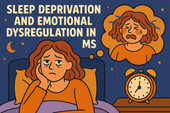
Sleep Deprivation and Emotional Dysregulation in MS
-

How to Cope When Friends Disappear After Diagnosis
Losing friends after a diagnosis can feel like another kind of grief. Discover why some friends disappear—and how to cope with the emotional fallout while building more supportive relationships.
-

How to Talk to Your Kids About MS Without Overwhelming Them
Struggling with how to explain MS to your kids? Learn how to talk to children of all ages about multiple sclerosis with honesty, clarity, and emotional safety—without overwhelming them.
-

MS and the Fear of Emotional Abandonment
The fear of emotional abandonment is common for people with MS. This article explores why it happens, how it impacts your relationships, and how to create emotional safety and healing.
-

Forgiveness, Closure, and Letting Go of the Past with MS
Living with MS often brings emotional wounds from the past. Learn how forgiveness, closure, and letting go can help you heal emotionally—and reclaim peace in the present.
-
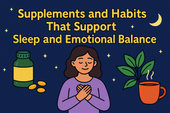
Supplements and Habits That Support Sleep and Emotional Balance
Struggling with poor sleep and emotional ups and downs? Discover calming supplements and daily habits that support deep rest and mental well-being—backed by science and easy to implement.
-

When Insomnia Feels Like Your MS Brain Won’t Turn Off
Struggling to sleep with MS? When your brain won’t shut off at night, insomnia feels relentless. Learn what causes it—and discover science-backed strategies to calm your mind and finally rest.
-

The Emotional Toll of Waking Up Tired Every Day: Why It Hurts More Than You Think
Waking up tired every day takes a deep emotional toll—from mood swings to lost motivation and self-doubt. Learn why chronic fatigue hurts more than you think and how to gently reclaim your mornings.
-
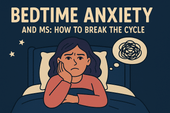
Bedtime Anxiety and MS: How to Break the Cycle
Bedtime anxiety is a common struggle for people with MS—and it’s more than just racing thoughts. Learn how MS-related stress, nervous system dysregulation, and fear of symptoms can create a cycle of sleeplessness, and discover practical, calming strategies to finally reclaim restful nights.
-
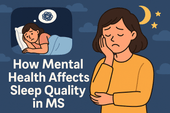
How Mental Health Affects Sleep Quality in MS: Breaking the Cycle of Fatigue and Emotional Distress
Struggling to sleep when you have MS? Discover how anxiety, depression, and neurological changes impact your rest—and what you can do to reclaim it. From CBT-I and calming supplements to lifestyle tips that support both mental health and sleep, this guide offers practical strategies for better nights.
-

Learning to Love Your Life (Even When It’s Not What You Expected)
Your life may not look how you imagined—but it’s still worth loving. Learn how to find peace, purpose, and joy in the unexpected.
-

Tips for Managing Depressive Thoughts Without Judgment
Learn how to meet depressive thoughts with compassion, not shame. These gentle, research-backed tools help you manage low moods without self-judgment.
-

Rewiring Hope: How to Slowly Come Back to Life
Feeling emotionally numb or disconnected? Learn how to gently rebuild hope, one small sensory step and spark of life at a time.
-

Depression and Suicidality in MS: A Conversation That Needs to Happen
Depression and suicidality in MS are real—and urgent. Learn why we must talk about it, how to spot warning signs, and where to find help and hope.
-

Finding Meaning When Life Feels Empty
Feeling disconnected or numb? Discover gentle ways to find meaning again—even in emptiness—through daily rituals, reflection, and purpose.
-

The Power of Daily Structure in Preventing Mental Health Spirals
Daily structure can prevent mental health spirals by creating safety, routine, and self-trust—especially for those with MS, depression, or anxiety.
-

Healing from Emotional Flatness with Sensory Rituals
Feeling emotionally numb or disconnected? Discover how sensory rituals can gently restore pleasure, presence, and emotional resilience.
-

The Role of Light Therapy for Seasonal Depression and MS
Can light therapy ease seasonal depression in people with MS? Discover the science, benefits, and how to use it safely for better mood and energy.
-

Medication vs Therapy: Treating MS-Related Depression Effectively
Explore whether therapy, medication, or both are best for treating MS-related depression. Understand what works, when—and why combination care is often ideal.
-

How to Support a Partner with MS and Depression
Learn how to support a partner living with MS and depression—practical tips, emotional tools, and ways to protect your own mental health too.
-

The Emotional Cost of Losing Your Old Life
Losing your old life to MS isn’t just about physical symptoms—it’s about grieving the identity, dreams, and freedom you once had. This article explores the emotional toll of invisible grief and how to begin healing without denying the pain.
-
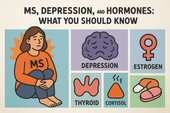
MS, Depression, and Hormones: What You Should Know
MS-related depression isn’t always just emotional—it can be hormonal. Discover how thyroid, sex, and stress hormones influence mood in MS, why women may feel worse during PMS or menopause, and what signs to look for when hormones may be driving emotional instability.
-

MS and Anhedonia: Reclaiming Pleasure One Step at a Time
Anhedonia—feeling emotionally flat or disconnected—is a common but misunderstood symptom of MS depression. This article explores how neuroinflammation, dopamine disruption, and fatigue can dull your sense of joy—and how small, gentle steps can help you begin to feel again.
-
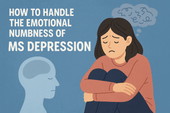
How to Handle the Emotional Numbness of MS Depression
Emotional numbness in MS depression doesn’t always look like sadness—it can feel like nothing at all. Learn why this disconnection happens, how it's tied to neuroinflammation and nervous system overload, and discover science-backed strategies to gently reconnect with your emotions.
-
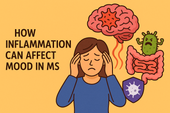
How Inflammation Can Affect Mood in MS
Mood swings and emotional numbness in MS aren’t just psychological—they can be driven by immune system inflammation. This article explores how inflammatory cytokines affect the brain, why mood changes are often biological, and what you can do to calm your nervous system from the inside out.
-
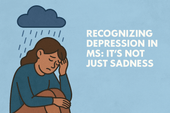
Recognizing Depression in MS: It's Not Just Sadness
Depression in multiple sclerosis (MS) is more than just sadness—it can be a neurological symptom, a side effect of inflammation, or a silent weight that masks itself as fatigue or emotional numbness. This article helps you recognize the hidden signs of MS-related depression, understand the science behind it, and explore real treatment options that support both mental and physical health.
-

Is Cryotherapy Safe for MS? Pros, Cons, and How It Compares to Cold Plunges
Cryotherapy promises quick recovery, inflammation reduction, and mood support—but is it safe for people with MS? This article breaks down the science, risks, and real-life benefits of cryotherapy for multiple sclerosis. You’ll also learn how it compares to cold plunges and which option may be better for calming flares and regulating your nervous system.
-

Can Cold Plunges Help Reduce Inflammatory Flares in MS?
Flares in multiple sclerosis (MS) are often driven by inflammation—but what if cold water could help turn down the heat? This in-depth article explores how cold plunges may help reduce flare frequency and intensity in MS by calming the immune system, lowering pro-inflammatory cytokines, and regulating the nervous system. Learn how to safely use cold exposure as part of your MS recovery routine.
-
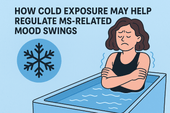
How Cold Exposure May Help Regulate MS-Related Mood Swings
Mood swings are a common but overlooked challenge in multiple sclerosis (MS). This article explores how cold exposure—like cold plunges and showers—may help regulate emotional ups and downs by calming the nervous system, reducing inflammation, and boosting mood-enhancing chemicals. Learn how to use this natural tool safely to support your mental and emotional resilience with MS.
-
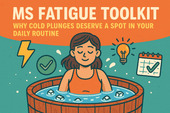
MS Fatigue Toolkit: Why Cold Plunges Deserve a Spot in Your Daily Routine
Fatigue is one of the most debilitating symptoms of multiple sclerosis (MS)—often invisible, misunderstood, and overwhelming. While no single tool can eliminate it, building a personalized fatigue management toolkit can make life more manageable. One surprising contender? Cold plunges. In this article, we explore why cold water immersion might be the refresh button your nervous system needs—and how to safely make it part of your MS fatigue routine.
-
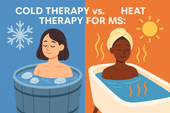
Cold Therapy vs. Heat Therapy for MS: Which One Helps More?
Managing multiple sclerosis (MS) often means navigating symptoms like fatigue, spasticity, pain, and nerve dysfunction. But when it comes to using temperature-based therapies, there’s a question many patients face: Should I be using cold or heat? In this in-depth guide, we explore the benefits, risks, and best use cases of cold therapy vs. heat therapy for MS.
-
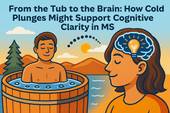
From the Tub to the Brain: How Cold Plunges Might Support Cognitive Clarity in MS
Cognitive fog is one of the most frustrating symptoms of multiple sclerosis (MS). But could cold plunges—those bracing dips into icy water—offer a surprising path to mental clarity? This article explores the emerging science behind cold exposure, brain function, and how a cold tub might help people with MS sharpen focus, lift brain fog, and reset their nervous system.
-
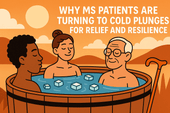
Why MS Patients Are Turning to Cold Plunges for Relief and Resilience
Cold plunges are no longer just for elite athletes and wellness influencers. A growing number of people with multiple sclerosis (MS) are turning to cold water immersion to ease symptoms, build nervous system resilience, and find calm in the chaos of chronic illness. This article explores why—and how—you might want to give it a try.
-
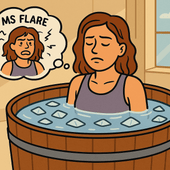
Finding Relief in the Midst of a Flare
MS flares can leave you feeling overwhelmed, exhausted, and mentally foggy. Cold water therapy is emerging as a promising tool to help reset the body and mind after a flare. This article explores how cold exposure supports recovery, calms the nervous system, and can be safely added to your daily routine.
-
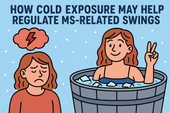
How Cold Exposure May Help Regulate MS-Related Mood Swings
Mood swings in multiple sclerosis (MS) can feel like emotional whiplash—one moment calm, the next overwhelmed, angry, or hopeless. While medications and therapy help, many people with MS are exploring natural strategies to support emotional balance. One surprising tool gaining attention? Cold exposure. In this article, we explore how cold plunges and other forms of cold therapy may regulate the nervous system, stabilize mood, and offer emotional relief for people with MS.
-
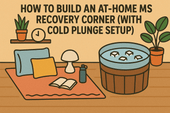
How to Build an At-Home MS Recovery Corner (with Cold Plunge Setup)
Create your personal MS recovery oasis at home—complete with a cold plunge setup. Learn how to design a space that supports healing, reduces inflammation, and helps you manage symptoms naturally.
-
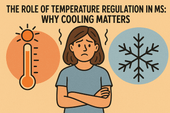
The Role of Temperature Regulation in MS: Why Cooling Matters

















































